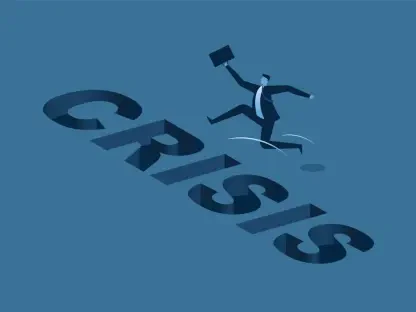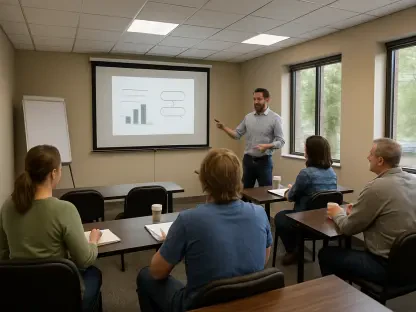Introduction
Imagine a college campus bustling with activity, but instead of just young faces fresh from high school, picture a single parent rushing to class after dropping off kids, or a veteran seeking new skills after years of service, challenging the outdated stereotype of who a college student is. This diverse reality reveals a significant yet often invisible group: adult learners, aged 25 and older, who make up over one-third of the higher education population in the United States, navigating unique barriers while pursuing transformative goals. Their presence underscores a critical need to rethink how society and institutions view and support education across a lifetime.
The purpose of this FAQ article is to address common questions and misconceptions surrounding adult learners in higher education. By exploring key issues such as societal biases, systemic challenges, and personal motivations, the content aims to provide clarity and guidance for understanding this demographic. Readers can expect to gain insights into the realities faced by these students, supported by data and real-world examples, while learning how educational structures can evolve to better serve all learners.
This article covers a range of topics, from the sheer scale of adult learners to the specific obstacles they encounter and the profound reasons behind their return to academia. Each section is designed to build a comprehensive picture of their experiences, offering actionable perspectives for students, educators, and policymakers alike. Through these discussions, the goal is to foster greater recognition and inclusivity for a group often sidelined in the broader narrative of college life.
Key Questions or Key Topics
Who Are Adult Learners in Higher Education?
Adult learners, defined as students aged 25 and older, represent a substantial segment of the college population in the United States, numbering over 6.2 million. Far from the traditional image of teenagers transitioning from high school, this group includes working professionals, parents, and individuals returning to education after long breaks. Their presence highlights a shift in how higher education serves diverse life stages, yet their stories remain largely untold in mainstream depictions of campus life.
The importance of recognizing adult learners lies in addressing the gap between perception and reality. Often, cultural narratives portray college as a youthful endeavor, ignoring the significant contributions and needs of older students. This oversight can perpetuate feelings of isolation and hinder the development of policies that cater to their unique circumstances, such as balancing education with full-time employment or family responsibilities.
To better understand this demographic, consider that many are driven by a mix of practical and personal goals, ranging from career advancement to intellectual fulfillment. Data shows that their enrollment continues to grow, signaling a trend toward lifelong learning. Institutions must acknowledge this reality by adapting support systems to ensure these students are not just present but thriving in academic environments.
What Challenges Do Adult Learners Face in College?
Adult learners encounter a variety of obstacles that set them apart from younger peers, primarily due to the mismatch between traditional college structures and their life circumstances. Many juggle multiple roles, such as parenting or full-time work, which can make attending classes or completing assignments a logistical challenge. Financial pressures also loom large, as living expenses and childcare costs often exceed what standard aid packages cover.
Another significant barrier is the lack of flexibility in academic scheduling and services. Most universities operate on the assumption that students have open availability during the day, which disregards the commitments of older learners. Evening or online options are often limited, and support services like counseling or tutoring may not align with non-traditional schedules, creating additional hurdles to success.
Societal biases further complicate their journey, with ageism manifesting in subtle ways on campus. Some adult learners report feeling dismissed by peers or faculty, as if their presence is an anomaly rather than a norm. This underscores a broader cultural challenge: education is often framed as a phase for the young, sidelining discussions of equity that should include age as a critical factor. Addressing these issues requires a shift in mindset at both institutional and societal levels.
How Do Systemic Barriers Impact Adult Learners?
Systemic barriers in higher education disproportionately affect adult learners, starting with financial aid structures that fail to account for their distinct economic realities. Unlike younger students who may rely on parental support, older students often bear the full burden of household expenses, yet aid calculations rarely factor in these costs. This gap can make pursuing a degree financially untenable for many.
Beyond funding, the design of academic programs often overlooks the needs of non-traditional students. Course schedules, for instance, are typically built around daytime availability, clashing with work hours or family duties. Additionally, campus resources like career centers or academic advising may prioritize younger students, leaving adult learners without tailored guidance to navigate their unique paths.
Evidence of these systemic shortcomings is clear in enrollment and completion rates, where adult learners often face higher dropout risks due to unsupported challenges. Studies suggest that institutions with flexible policies, such as expanded online learning or childcare support, see better retention among this group. Reforming these systems is essential to ensure that higher education serves as a viable option for all, regardless of age or life stage.
Why Do Adult Learners Return to Education?
The motivations behind adult learners’ return to education are as varied as the individuals themselves, often blending practical needs with deeper aspirations. For some, the decision is driven by career necessity, such as acquiring new skills to remain competitive in a changing job market. Others seek credentials to pivot to entirely new fields after years in a different industry.
Yet, beyond vocational goals, many are drawn by a desire for personal growth and intellectual renewal. Returning to the classroom can represent a chance to explore long-held interests or to rediscover a sense of purpose through learning. This perspective challenges the narrow view of education as merely a stepping stone to employment, highlighting its role in fostering lifelong curiosity and development.
Examples abound of adult learners who describe their academic journey as transformative, not just in terms of knowledge gained but in rebuilding confidence and discipline. Their stories emphasize that education at any age can be a powerful tool for reinvention. Recognizing these diverse drivers is key to creating campus cultures that value and support every student’s unique reasons for being there.
How Can Higher Education Better Support Adult Learners?
Supporting adult learners requires a fundamental rethinking of how colleges and universities operate, starting with more inclusive financial aid policies. Aid packages should reflect the real costs faced by older students, including dependents and living expenses, rather than adhering to outdated models designed for younger demographics. Grants or scholarships specifically for non-traditional students could also alleviate economic strain.
Flexibility in scheduling and delivery methods stands out as another critical area for improvement. Expanding access to evening classes, weekend sessions, and robust online programs can accommodate the demanding lives of adult learners. Additionally, institutions should enhance support services, such as offering on-campus childcare or advisors trained to address the specific concerns of older students balancing multiple responsibilities.
Creating a campus culture that embraces age diversity is equally important. Faculty and staff training on inclusivity can help reduce bias, while student organizations for adult learners can foster a sense of belonging. Data indicates that institutions implementing such changes see improved outcomes for non-traditional students, proving that systemic adaptation not only benefits individuals but also enriches the broader academic community.
Summary or Recap
This article addresses the critical yet often overlooked role of adult learners in higher education, shedding light on their significant presence and unique challenges. Key points include the sheer number of students aged 25 and older—over 6.2 million in the U.S.—and the systemic barriers like inflexible schedules and inadequate financial aid that hinder their success. Societal biases further marginalize this group, while their diverse motivations, from career upskilling to personal enrichment, reveal education’s transformative potential at any age.
The main takeaway is the urgent need for higher education to evolve, ensuring policies and practices reflect the realities of a diverse student body. Insights provided here emphasize actionable steps, such as tailored aid, flexible learning options, and cultural shifts toward inclusivity. These changes are essential to support adult learners in achieving their goals and contributing to academic environments.
For those seeking deeper exploration, resources like national reports on non-traditional students or institutional studies on lifelong learning offer valuable perspectives. Engaging with these materials can provide further understanding of how to advocate for and implement reforms. This summary encapsulates the core issues and solutions, reinforcing the importance of recognizing adult learners as an integral part of higher education.
Conclusion or Final Thoughts
Reflecting on the discussions held, it becomes evident that adult learners have long been sidelined in the narrative of higher education, despite their substantial numbers and contributions. Their struggles with systemic barriers and societal biases reveal a pressing need for change in how educational institutions operate. The transformative power of learning at any stage of life emerges as a compelling reason to prioritize their inclusion.
Moving forward, actionable steps have been identified to bridge the gap between current practices and the needs of non-traditional students. Institutions could start by piloting programs with flexible scheduling and enhanced support services, while policymakers might consider revising aid frameworks to better address the economic realities faced by older learners. These efforts promise to create a more equitable academic landscape.
As a final thought, readers are encouraged to reflect on how these insights apply to their own contexts—whether as students, educators, or advocates. Considering ways to support or champion adult learners in local communities or on campuses can drive meaningful progress. The journey to redefine education as a lifelong pursuit has just begun, and every step taken toward inclusivity matters.








